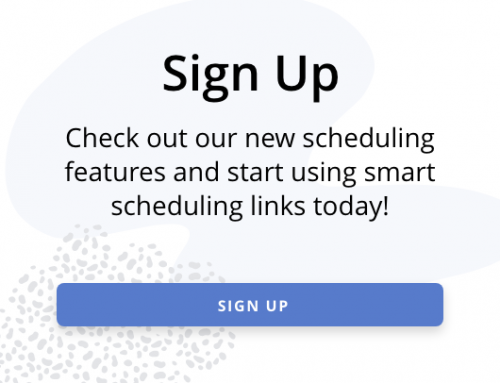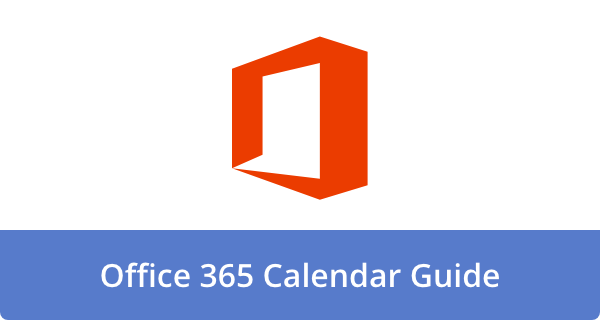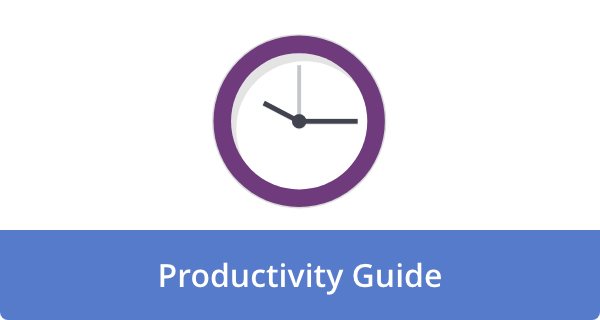

In our daily lives, Google tools like Gmail, Google Calendar, and Google Meet have become indispensable. After all, we rely on these platforms for scheduling meetings, hosting virtual calls, and managing personal appointments. However, their widespread use has brought an unfortunate side effect: they’ve become prime targets for cybercriminals.
Google reports that over 60% of U.S. consumers believe scams have increased over the past year, and a third have personally experienced data breaches. 61% of respondents have been targeted via both email and text messages. I’ve received multiple scam emails over the past couple of weeks. Aside from being a nuisance, cybercrime is a significant concern, with the world projected to lose $23 trillion by 2027 due to cybercrime.
However, recent scams are more than sending poorly written spam emails or fake text messages. Modern phishing attacks embed phishing links into legitimate Google tools, making them sophisticated and convincing. Cyberattacks such as these aim to deceive, steal sensitive information, and even hijack your entire digital identity.
For instance, scammers have exploited Google’s platforms in new and alarming ways, forging fake calendar invites, spoofing Google Meet links, and even impersonating Google support staff. So, here’s the lowdown on how these scams work, what they’re after, and how you can avoid falling for them.
The Triple Threat: Unmasking Google-Based Phishing Scams
These three pervasive and dangerous methods leverage Google’s ecosystem to exploit cybercriminals.
A fake Google Calendar invite sends an insidious invasion.
Obviously, having a digital calendar that organizes your day, keeps you on top of important appointments, and seamlessly integrates with your professional life will make your life that much easier. It’s like having your own personal assistant. But what if that assistant unwittingly invited a thief into your home? This is precisely how one of the more insidious tactics works: embedding phishing links within seemingly benign Google Calendar invitations.
Often, these deceptive invitations appear to originate from someone you already know, such as a trusted business contact or a reputable company. For many users, Google Calendar automatically adds new invites to their calendars, complete with event details, a description, and a malicious link.
By clicking on such a link, you expose yourself to severe risks, believing you’re accessing legitimate meeting details. You may be redirected to a fake sign-in page, designed to steal your Google credentials. Alternatively, it could silently download malicious software (malware). Once installed, this malware can operate covertly, gathering sensitive personal information, including financial details and passwords, from other websites. In a look-alike page, scammers get access to your email, contacts, files, photos, and any other Google services you use.
Overall, by default, your calendar simply adds invites from anyone, which makes it easy for attackers to insert themselves into your schedule without you realizing it.
An urgent deception: a spoof invitation to a Google Meet.
Remote work, virtual classrooms, and connecting across distances have all become possible with Google Meet. Sadly, its widespread use has made it a fertile ground for scammers. Another standard method of attack involves sending an invitation for a Google Meet meeting that appears to be legitimate. Often, these invitations look highly professional, resembling corporate communications or urgent requests from colleagues. Nonetheless, the “Join Meeting” link concealed within is misleading.
Rather than seamlessly connecting you to a real video conference, this spoofed link sends you to a fraudulent site. There’s a good chance this site is a near-perfect copy of a Google login page. If you click on the link, malware could download automatically to your device. When this malware runs in the background, it can harvest confidential data like passwords, credit card numbers, and other highly sensitive information. There is even a possibility that it will establish a backdoor, allowing for remote access and control.
Human behavior makes spoofed Google Meet links more dangerous. Especially when invites appear urgent or from a trusted source, we typically click “Join” without hesitation. By exploiting this habit and the perceived urgency, scammers profit from our natural inclination to connect quickly.
Betrayal at its finest: Impersonating Google Support.
One of the most brazen and alarming tactics involves cybercriminals impersonating Google engineers. Some victims receive highly convincing emails, instant messages, or even phone calls claiming their Google account is at risk. In some cases, fabricated issues imply security breaches, unauthorized access, and password resets to avoid account suspension.
Typically, the message includes a link or toll-free number, urging the user to “resolve the issue immediately.” Unsuspecting users follow the instructions out of fear. You’re then directed to a fake login page or asked to provide personal information.
The worst-case scenario? When the attacker takes over the entire Google account, they can lock the user out, change passwords, and gain unrestricted access to their Gmail, Google Drive, Google Photos, and other services. This is a significant breach of one’s digital identity.
How to Fortify Your Defenses: Protecting Yourself from Google-Based Phishing Attacks
Even though these scam tactics are deeply troubling, there is good news: you are not powerless. By taking concrete, proactive steps, you can protect yourself significantly without abandoning the indispensable Google tools you use every day. You have a shared responsibility for security, and your active participation is essential.
You can protect yourself from spam by enabling “Known Senders” in Google Calendar.
One of the easiest yet most effective proactive measures you can take against phishing calendar invites is to change your calendar settings. In Google Calendar, you can control who can automatically add invitations to your calendar. If the “Only if the sender is known” setting is enabled, you’ll only see invites from people you know. The result is that you will no longer receive random invites containing malicious links on your calendar.
By default, this setting is on when you create a new Gmail account. However, it might be necessary to enable older accounts manually. It’s as simple as this;
- Open Google Calendar on your desktop web browser.
- Click on the gear icon (Settings menu) in the top right corner.
- Select “Settings”.
- In the left-hand menu, navigate to “Event settings.”
- Under the section labeled “Add invitations to my calendar,” select the option: “Only if the sender is known.”
With this small adjustment, spam and phishing calendar invites are much less likely to sneak into your digital schedule unnoticed.
A golden rule of online safety is to always inspect links before clicking them.
When dealing with suspicious calendar invites or Google Meet links, this principle applies universally. In other words, take a moment to consider the destination of any link before clicking on it.
- On the desktop. To view the link, hover your mouse cursor over it (without clicking). In most browsers, the true URL appears in the bottom-left corner.
- On mobile. You can long-press the link (press and hold it). There is usually a pop-up that displays the full URL.
If the URL looks suspicious, contains unusual characters, has misspellings (e.g., “https://www.google.com/search?q=g00gle.com” instead of “https://www.google.com/url?sa=E&source=gmail&q=google.com”), or points to an unfamiliar domain, do not click it.
Google Meet links, for example, almost always follow a recognizable format, such as https://meet.google.com/xxx-xxxx-xxx. Whenever deviations from this standard structure occur, they should immediately be viewed as a red flag. Whenever something feels off, listen to your instincts.
Don’t be fooled by unsolicited account alerts: Verify directly.
Often, social engineers impersonate trusted entities. It’s essential to know this rule: Google will never ask for your password or account details via unsolicited email, a random calendar invitation, or an unexpected phone call. If you get an email alert that your Google account has been compromised, don’t click on any embedded links or call any numbers.
Instead, always verify directly.
- Open your web browser and manually type https://myaccount.google.com into the address bar.
- Login to your Google account directly from this official, trusted portal.
- Once logged in, navigate to the “Security” section. Look for “Recent security events” or “Security activity” to see if Google has flagged any issues.
- If a password change is indeed required, only perform it from within your official Google account settings via the myaccount.google.com portal.
Whenever you receive instructions via email from a domain other than @google.com (e.g., @accounts.google.com), take precautions. You should also be extremely cautious when calling numbers listed in suspicious messages.
Ensure that you enable Two-Factor Authentication (2FA) as a crucial safety measure.
If your username and password are compromised, Two-Factor Authentication (2FA), also known as Multi-Factor Authentication (MFA), will prevent unauthorized access. In addition to your password, 2FA requires something you have (such as your phone) or something you are (such as your fingerprint).
With Google 2FA, you can choose from several secure and convenient methods:
- Google prompt. The mobile device you trust receives a push notification to approve login attempts.
- Authenticator app. A code generated by an app such as Google Authenticator or Authy.
- Security key. A physical USB device that provides a second factor of authentication.
- Text message or phone call. Codes are sent via SMS or voice message. It’s not as secure as other methods, but it’s better than nothing.
- Backup codes. For emergencies, you can save single-use codes in advance.
By enabling two-factor authentication (2FA) today, you significantly enhance the security of your account, making it much harder for unauthorized individuals to access it.
Patching the digital gaps with updated browsers and devices.
In many sophisticated phishing attacks and malware infections, outdated software is exploited. The primary goal of cybercriminals is to gain illicit access by continually scanning for these vulnerabilities. To maintain robust cybersecurity hygiene, it is essential to keep all your devices up to date.
As such, take the following steps to ensure that you;
- Web browser. Ensure that Chrome, Firefox, Safari, and Edge are running the latest versions. It is common for browsers to release security patches.
- Operating system. The latest security fixes are available for Windows, macOS, Android, and iOS. Where possible, enable automatic updates.
- Antivirus/Anti-malware software. Ensure these are active, up-to-date, and regularly scanned if they are installed.
Despite Google’s own AI-powered defenses, which block 99.9% of spam, phishing attempts, and malware, these user-side security practices significantly augment that protection.
What Google Is Doing About It
Whenever phishing or malicious activity is reported, Google says it takes extensive measures to stop it. According to the company, it consistently emphasizes the following;
- As part of the design process for Google Meet, privacy and security were considered as foundational principles that were integrated with tools to detect and prevent misuse.
- By combining artificial intelligence and machine learning, Gmail blocks most dangerous messages.
- Whenever a user reports suspicious activity, Google investigates it quickly, shuts down abuse, and refines its protective algorithms.
Despite Google’s considerable efforts, users must take responsibility by enforcing and tightening security settings, maintaining unwavering vigilance, and thoroughly reporting suspicious behavior.
Final Thoughts: Knowledge is Your Ultimate Defense
In terms of their tactics, cybercriminals are nimble, relentless, and increasingly sophisticated. They will undoubtedly continue to evolve as more aspects of our lives move to the digital realm. In terms of cybersecurity, however, knowledge remains your most powerful weapon. The more you understand how scammers use seemingly harmless tools like Google Calendar and Google Meet, the more you can recognize and evade their insidious traps.
Don’t let digital safety slip through your fingers. Utilize the built-in protections offered by Google. Also, practice meticulously double-checking unfamiliar links. And, remember to maintain a healthy dose of skepticism when it comes to any unexpected account alert or urgent request for action. Keeping informed, exercising caution, and prioritizing your digital security will not require you to live in constant fear of cyber threats.
Most importantly, always remember: Don’t click. Directly log in. If you see anything suspicious, report it immediately. This is fundamental to your digital safety and the protection of your sensitive information.
FAQs
What’s the biggest red flag for a Google Calendar or Meet phishing link?
Red flags include unusual or mismatched URLs. To view the actual web address, hover over the link (or long-press on mobile devices). When a message does not clearly begin with https://calendar.google.com/ or https://meet.google.com/ (or a trusted, familiar domain from a known sender), or contains misspellings (e.g., go0gle.com), unusual characters, or an overly long string of unrelated text, it is highly suspect.
I clicked a suspicious link. What should I do immediately?
If you accidentally click on a suspicious link;
- Do not enter any sensitive information (like passwords) on the page that loads.
- Close the browser tab immediately.
- Run a full scan with a reputable antivirus or anti-malware software on your device.
- Change your Google account password immediately from myaccount.google.com (do not click links in emails).
- Check your Google account’s security activity (myaccount.google.com/security) for any unauthorized logins or unusual activity.
- Contact your bank or credit card issuer if you entered banking or credit card information.
Why do scammers use Google services specifically?
Scammers target Google services due to their widespread adoption and the inherent trust associated with them. Every day, billions of people use Google Calendar, Gmail, and Google Meet, making them potential victim pools. With seamless integrations and familiar interfaces, scammers can create convincing fakes that bypass user scrutiny and exploit user habits (e.g., joining quickly).
Can Two-Factor Authentication (2FA) protect me if my password is stolen?
Yes, absolutely.
2FA is an essential security measure. Even with a stolen password (for example, through a fake login webpage), a scammer will still have difficulty accessing your account without the second factor (such as your phone code, your security key, or the tap on your mobile device). Even with a compromised password, unauthorized individuals will have a much harder time gaining access.
How can I report a suspicious Google Calendar invite or email?
By reporting suspicious activity, Google can improve its defenses.
For suspicious emails in Gmail;
To report phishing or spam, open the email, click the three-dot menu, then select “Report phishing” or “Report spam.”
For suspicious calendar invites:
- If the event is already on your calendar, open it, click the three dots, and select “Report spam.”
- From the email invitation, you can often “Report spam” if you haven’t already done so. To prevent future attacks, Google will investigate the sender and content.
Image Credit: Thirdman; Pexels











John Rampton
John’s goal in life is to make people’s lives much more productive. Upping productivity allows us to spend more time doing the things we enjoy most. John was recently recognized by Entrepreneur Magazine as being one of the top marketers in the World. John is co-founder of Calendar.